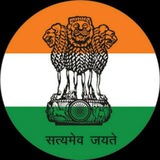tg-me.com/CSE_EXAM/37903
Last Update:
🔆Akbar
✅ Akbar was Son of Humayun.
✅ Akbar’s position was in dangerous when he succeeded his father Humayun as Delhi was seized by the Afghans.
✅ In 1556, in the second battle of Panipat, Akabar defeated Hemu and the army of Heme fled which made the victory of Mughal decisive.
✅ During the first 5 years of Akbar’s reign, Bairam Khan acted as his regent.
▪️Akbar relations with Rajpoot
✅ Akbar married the Rajput Princess Jodhabai, the daughter of Raja Bharmal.
✅For four generation, the Rajputs served the Mughals and many served in the positions of military generals as well.
✅ Akbar appointed Raja Man Singh and Raja Bhagawan Das in the senior position of the Mughal Administration.
✅ Though majority of the Rajput states surrendered to Akbar, the Ranas of Mewar continued to confront even though they were defeated several times.
✅ In 1576, the Mughals Army defeated Rana Pratap Singh in the battle of Haldighati, following the defeat of Mewar, other leading Rajput leaders surrendered to Akbar and accepted his Akbar’s policy towards Rajput was combined with a broad religious toleration.
✅ He abolished the pilgrim tax and later the jiziya.
▪️Akbar’s Religious Policy:
✅ He allowed his Hindu wives to worship their own gods.
✅ In 1575, Akbar built Ibadat Khana (House of worship) at his new capital Fatepur Sikri and invited scholars from all religions like Christianity, Hinduism, Jainism, and Zoroastrianism.
✅ He did not like the intrusion of the Muslim Ulemas in political matters.
✅ In 1579, he delivered the “Infallibility Decree” and proclaimed his religious powers.
✅ In 1582, he propagated a new religion called Din Ilahi or Divine Faith.
▪️About Din Ilahi of Akbar:
✅ The new religion believed in one God.
✅ It had all the good points of every religion.
✅ It didn’t endorse any philosophy.
✅ It aimed at bridging the gap that separated different religions.
✅ The new religion had only 15 followers including Birbal.
✅ Akbar did not compel anyone to join his new religion.
✅However, the new religion proved to be a failure, after Akbar’s death.
▪️Land Revenue Administration of Akbar:
✅ With the help of Raja Todar Mal, Akbar experimented on the land revenue administration, which was completed in 1580.
✅The land revenue system was called Zabti or Bandobast system or Dahsala System.
✅ The revenue was fixed on the average yield of land measured on the basis of previous ten years.
✅The land was divided into four categories
🔸Polaj (cultivated every year)
🔸 Parauti (once in two years)
🔸 Chachar (once in three or four years)
🔸Banjar (once in five or more years)
▪️Mansabdari System of Akbar
✅ Akbar introduced the Mansabdari system in his administration
✅ Under this system every officer was assigned a rank (Mansab)
✅ Lowest rank was 10 and the highest was 5000 for the nobles.
✅ Princes of royal blood received even higher ranks.
✅ The ranks were divided into two – Zat and Sawar.
🔸Zat means personal and it fixed the personal status of a person.
🔸 Sawar rank indicated the number of cavalrymen of a person who was required to maintain.
🔸 Every sawar had to maintain at least two horses.
✅ All appointments, promotions and dismissals were directly made by the emperor.
#PYQanalysis
Join @CSE_EXAM
@Prelims_tricks
BY CSE EXAM ( UPSC prelims mains) CAPF
Warning: Undefined variable $i in /var/www/tg-me/post.php on line 283
Share with your friend now:
tg-me.com/CSE_EXAM/37903
